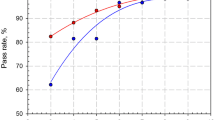Abstract
In medical laboratories, a metrological basis for quantitation is missing for many tests. This is recognised by the profession and over the last decade the concept of metrological traceability is advocated. However, daily practice is refractable: for many analytes reference measurement procedures are missing and once in place, clinicians obstruct the new units. This wearisome process is described in general terms and illustrated by the specific case of HbA1c. A working group of the scientific division of the IFCC developed a reference system for this key parameter in diabetes management. This system is worldwide accepted as the analytical anchor. However, clinicians objected the new units. A debate of years followed. This urged the international diabetes organisations IDF, EASD and ADA to find a solution to avoid confusion. They came up with a consensus statement, but this compromise—report of HbA1c in three units—was unpractical and not accepted. Finally, decisions were made at a national level: the European Union and Japan will report in the new units, the US in their old national units and an additional unit, the estimated average glucose.




Similar content being viewed by others
References
Panteghini M, Forest JC (2005) Standardization in laboratory medicine: new challenges (review). Clin Chim Acta 355:1–12
(1998) Directive 98/79/EC of the European Parliament and the Council of 27 October 1998 on in vitro diagnostic medical devices. Off J L 331:1–37
Mokdad AH, Ford ES, Bowman BA, Dietz WH, Vinicor F, Bales VS, Marks JS (2003) Prevalence of obesity, diabetes, and obesity-related health risk factors, 2001. JAMA 289:76–79
The Diabetes Control and Complications Trial Research Group (1993) The effect of intensive treatment of diabetes on the development and progression of long term complications in insulin-dependent diabetes mellitus. N Engl J Med 329:977–986
Little RR, Rohlfing CL, Wiedmeyer HM, Myers GL, Sacks DB, Goldstein DE (2001) The National Glycohemoglobin Standardization Program: a five-year progress report. Clin Chem 47:1985–1992
ADA (2007) Clinical practice guidelines 2007. Diabetes Care 30(Suppl 1):S3
Shima K, Endo J, Oimomi M, Oshima I, Omori Y, Katayama Y et al (1994) Inter-laboratory difference in HbA1c measurement in Japan: a report of the Committee on an Inter-laboratory Standardization of HbA1c Determination. The Japan Diabetes Soc 37:855–864
Arnquist H, Wallensteen M, Jeppsson JO (1997) Standardization of long-term glucose measurements established. Lakartidningen 50:4789–4790
Finke A, kobold U, Hoelzel W, Weykamp C, Jeppsson JO, Miedema K (1998) Preparation of a candidate primary reference material for the international standardisation of HbA1c determinations. Clin Chem Lab Med 36:299–308
Jeppsson JO, Kobold U, Barr J, Finke A, Hoelzel W, Hoshino T et al (2002) Approved IFCC reference method for the measurement of HbA1c in human blood. Clin Chem Lab Med 40:78–89
Weykamp C, John WG, Mosca A, Hoshino T, Little R, Jeppsson JO et al (2008) The IFCC reference measurement system for HbA1c: a 6-year progress report. Clin Chem 54:240–248
Konnert A, Arends S, Schubert S, Berding C, Weykamp C, Siebelder C (2006) Uncertainty calculation for calibrators of the IFCC HbA1c standardization network. Accred Qual Assur 11:319–328
Konnert A, Berding C, Arends S, Parvin C, Rohlfing C, Wiedmeyer H et al (2006) Statistical rules for laboratory networks. J Test Eval 34:128–134
Consensus Statement on the Worldwide Standardization of the Hemoglobin A1c Measurement (2007) American Diabetes Association, European Association for the Study of diabetes, International Federation of Clinical Chemistry and Laboratory Medicine and International Diabetes Federation Consensus Committee. Diabetes Care 30:2399–2400
The International Expert Committee (2009) International Expert Committee Report on the role of the HbA1c assay in the diagnosis of diabetes. Diabetes Care 32: July 2009
Acknowledgments
Author is network coordinator of the IFCC Working Group on Standardisation of HbA1c and wishes to thank the members of the Working Group, the reference laboratories in the network and all manufacturers and EQA organisers with whom he collaborated and collaborates. All these are not named specifically here but can be found on http://www.ifcchba1c.net.
Author information
Authors and Affiliations
Corresponding author
Rights and permissions
About this article
Cite this article
Weykamp, C. The traceability chain in medical laboratories: a long and winding road, the example of HbA1c . Accred Qual Assur 15, 3–7 (2010). https://doi.org/10.1007/s00769-009-0597-5
Received:
Accepted:
Published:
Issue Date:
DOI: https://doi.org/10.1007/s00769-009-0597-5




